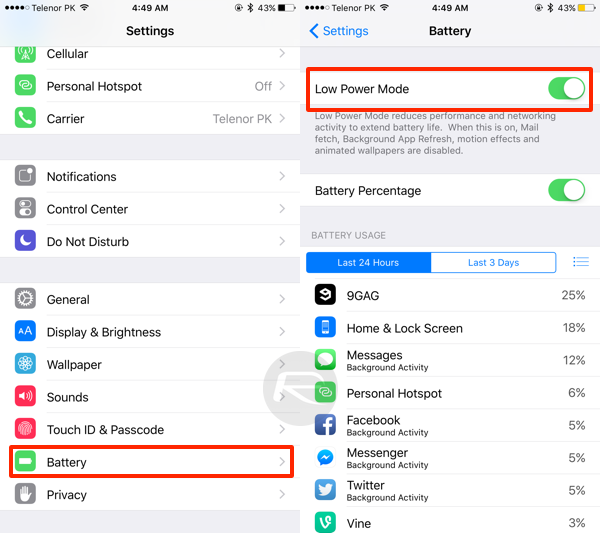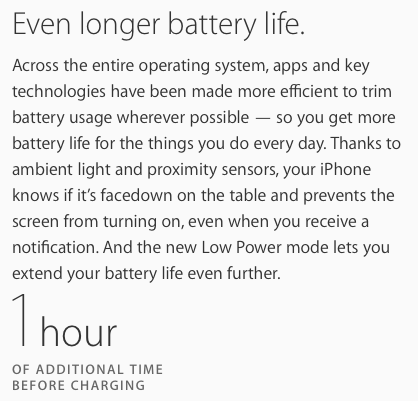One of the features of iOS 9 that Apple mentioned during its Worldwide Developers Conference opening keynote was the Low Power Mode that many are clinging to as a way to try and eek a little more life out of an iPhone or iPad’s battery when the going gets tough. Users of Android phones will already be familiar with the concept of turning things off in order to preserve battery life when things start to get a little tight towards the bottom end of the battery gauge, but it’s a whole new thing to iOS, and it’s something we can only hope lives up to the billing.
For those who haven’t yet seen the keynote or haven’t tried iOS 9 out for themselves, Low Power Mode is a state that iOS can put itself into with the aim of preserving as much power as possible when we really need it. Now, iOS 9 will ask if you want to enter Low Power Mode when you reach 20% and then 10% of your battery remaining, and it can also be turned on at will via the new Battery section of the Settings app. But what does it do?

According to Apple’s own information, Low Power Mode starts turning things off like sensors and such in order to make what battery life you do have last as long as possible. Screen brightness and the time it takes to turn off are both reduced, and push notifications are turned off completely for Mail. Background refreshing and downloads are prevented, and even network speeds are theoretically reduced with an eye on the power needed to make it all work. Apple even reduces motion settings in an attempt to make batteries last that little bit longer.

From Apple’s official website:

Apple claims to be able to add up to three hours to a battery’s life, and that’s quite likely given what is being turned off. It’s impossible to know where things are with iOS 9 beta 1 right now given the overarching battery issues that are seen by this current beta, so we’ll reserve judgement for now. In theory, the whole idea sounds just gravy though, so we’ll now just wait and see how it pans out in practice, too.
You may also like to check out:
- iOS 9 Beta 1: Thoughts And Impressions
- Download iOS 9 Beta 1 And Install On iPhone 6, 6 Plus, 5s, 5c, 5, 4S, iPad, iPod touch [Tutorial]
You can follow us on Twitter, add us to your circle on Google+ or like our Facebook page to keep yourself updated on all the latest from Microsoft, Google, Apple and the web.

